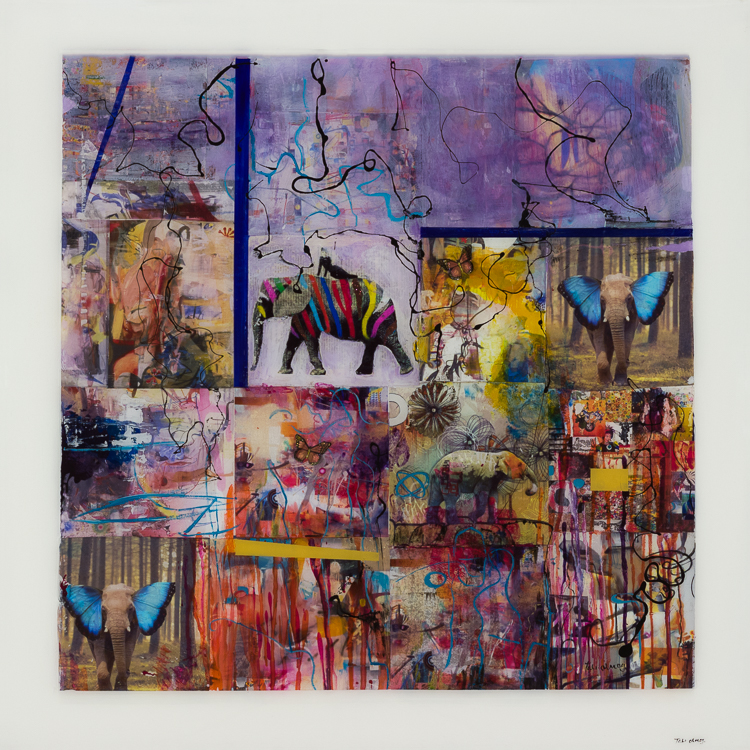Abstract art possesses a remarkable ability to transcend the constraints of representation, inviting viewers to embark on a journey of interpretation, emotion, and contemplation. Within the realm of “famous abstract art,” there exist timeless masterpieces that have left an indelible mark on the art world. These works, created by visionary artists who dared to push artistic boundaries, continue to captivate the imagination and challenge our perceptions of reality. In this exploration, we delve into the world of famous abstract art, unveiling the stories behind these iconic pieces and the profound impact they have had on the artistic landscape.
Wassily Kandinsky’s “Composition VII”: A Symphony of Color and Form
Wassily Kandinsky, often hailed as the pioneer of abstract art, mesmerized the world with his groundbreaking work “Composition VII.” This canvas is a visual symphony, orchestrating a myriad of colors, shapes, and lines in a harmonious dance. Released in 1913, the painting is a culmination of Kandinsky’s journey into abstraction, representing a departure from the recognizable and a plunge into the realm of pure emotion. “Composition VII” challenges viewers to navigate its intricate network of forms, invoking a kaleidoscope of feelings that echo across time.
Mark Rothko’s “No. 14”: The Sublime Power of Color
Mark Rothko’s “No. 14” is a testament to the transformative power of color. With its towering presence, the painting envelops the viewer, creating an immersive experience that transcends the boundaries of the canvas. Rothko’s signature “color field” technique engulfs observers in a meditative ambiance, inviting them to contemplate the emotional resonance of the hues before them. “No. 14” exemplifies Rothko’s mastery in harnessing color to evoke profound emotional responses, transforming the act of viewing into an introspective encounter.
Joan Miró’s “The Birth of the World”: Surreal Abstraction
In “The Birth of the World,” Joan Miró offers a glimpse into a fantastical universe that blurs the lines between reality and dream. This iconic piece, created in 1925, showcases Miró’s unique approach to abstraction, incorporating elements of surrealism and automatism. The painting appears as if it emerged from a realm of unconscious creation, where forms and symbols intermingle in an enigmatic dance. “The Birth of the World” challenges conventional artistic norms and invites viewers to participate in its imaginative narrative, bridging the gap between the conscious and the subconscious.
Jackson Pollock’s “Autumn Rhythm”: Dance of Chaos and Control
Jackson Pollock’s “drip paintings” revolutionized the art world, with “Autumn Rhythm” standing as a prime example of his radical approach. Created through a unique process of controlled chaos, Pollock dripped and flung paint onto the canvas, allowing spontaneity and intention to intertwine. “Autumn Rhythm” captures the dynamic interplay between chaos and control, inviting viewers to decipher the intricate patterns that emerge from the seemingly frenetic marks. This masterpiece challenges the boundaries of artistic technique and invites us to witness the raw energy of creation.
Piet Mondrian’s “Composition with Red, Blue, and Yellow”: Geometry of Harmony
Piet Mondrian’s “Composition with Red, Blue, and Yellow” epitomizes the marriage of geometry and harmony within modern abstract art. Through his iconic use of primary colors and rectilinear forms, Mondrian sought to distill art to its essential elements. The result is a work of unparalleled simplicity that exudes a sense of equilibrium and order. This painting not only celebrates abstraction but also signifies Mondrian’s quest for universal truth through art, a visual representation of his philosophical principles.
In conclusion, “Captivating the Imagination: Famous Abstract Art That Transcends Boundaries” introduces us to a world of artistic innovation and emotional depth. Through the lens of masterpieces like Kandinsky’s “Composition VII,” Rothko’s “No. 14,” Miró’s “The Birth of the World,” Pollock’s “Autumn Rhythm,” and Mondrian’s “Composition with Red, Blue, and Yellow,” we witness the transformative power of abstract art. These works defy convention, spark introspection, and stand as enduring testaments to the limitless potential of human creativity. As we contemplate these iconic pieces, we’re reminded of art’s unique ability to bridge the gap between the tangible and the intangible, inviting us to explore the boundless realms of imagination.




